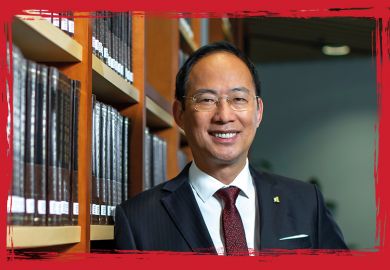Australia’s first 2022 university semester is now half done. Before the pandemic, this milestone may have passed without notice. But after two years of closed international borders, the beginning of this academic year has had a distinctly emotional feel – although the excitement was offset by anxiety as the wave of Omicron swept across the continent.
Universities and their staff have taken a battering during the past two years. Not only have they had to deal with all the human, economic and pedagogical fallout of the pandemic, they have also seen their stature decline in the eyes of some in government and have received less support than usual from the business and wider communities. But it has arguably been students that have suffered the most, given the long lockdowns’ impact on campus life and learning.
For both reasons, we – two former senior civil servants, both with close ties to the university sector – believe that sector leaders should approach the post-lockdown period with the student experience as their number one priority. And, based on interviews we have recently conducted with a group of leaders from the university, business and government sectors, it seems that our view is widely shared.
The educational mission of Australian universities was in transition well before Covid-19. Government and some businesses promoted reform in modes of delivery, such as microcredentialling. Blended learning, which brings together digital learning and face-to-face teaching, is not a new idea, either.
Such innovations partly reflect the fact that students are more diverse than the relatively privileged participants in higher education “when we were young”. We cannot assume that they come with the same expectations or vocational intent. Domestic students from rural or equity backgrounds, for instance, need to be supported to find ways to positively connect to all aspects of their university experience. Distinct approaches may be needed for different cohorts. On the upside, universities can harness lessons from online learning over two years and reflect on what works and what does not in the psychosocial support of students.
Modern students also bring a radically different digital toolkit to their learning. And while it is abundantly clear that many have missed physical interaction on campus during the past two years, their connection with campus life is likely to continue to evolve. This transformation was already under way before the pandemic, with growing numbers of working students valuing the convenience of digital learning. Many other students have come to appreciate having the choice of online and face-to-face student services.
Moreover, as much as we all want to see the back of this pandemic, it is unlikely that this will be the last for our generation. The forces of ecological change and population movement are still at play across the globe. So universities will need to continue to be pandemic ready and alert to significant environmental and geopolitical disruption. This is another reason why digital is here to stay.
Adapting to that reality will be particularly challenging for institutions with strong campus-based missions. They will need to rethink their balance-sheet strategies, for instance. It is important that future capital expenditure focuses on the digital capability required to ensure a high-quality education experience. And current investment strategies arguably need rethinking anyway.
It is also time to recommit to building the capability of the university teaching workforce, to ensure they are equipped for this transition in pedagogy. In particular, we need to take steps to reverse casualisation, both to create professional security and as a basis for growing quality.
Recovery of international student markets, meanwhile, requires a reimagined international student experience – which is currently not a good as it should be. Surveys point to the perils of social isolation and a segmented classroom experience. Domestic students should be sharing an educational and community experience with their international colleagues – and not only for the latter’s benefit. After all, Australia’s international students are the future business and government leaders of many countries across the Asia-Pacific region. They are a good network for Australian graduates to have!
Focusing on the student experience in these ways will help universities rebuild the covenant with communities that they have so long enjoyed.
Robert Griew is a consultant and Ian Anderson is deputy vice-chancellor (student and university experience) at the Australian National University.
后记
Print headline: Put student experience first





